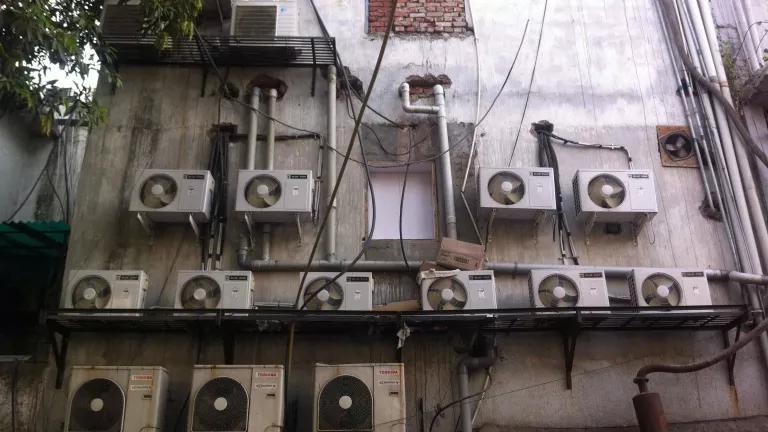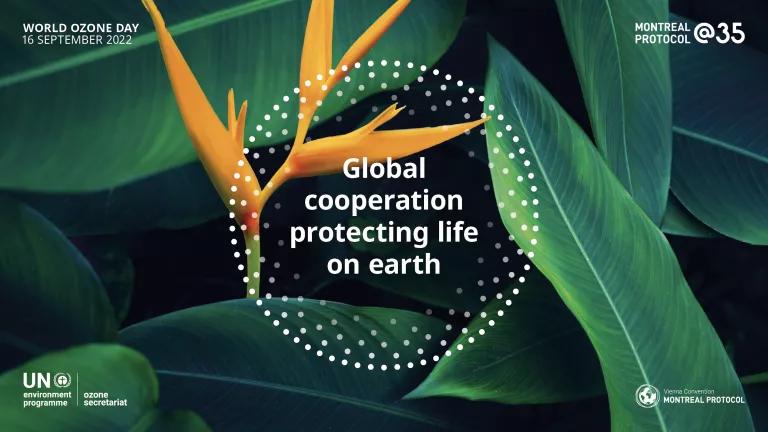Yesterday I told the story of how the threat of ozone-hole was discovered, and how NRDC helped win the Montreal treaty and strong U.S. laws to protect the ozone layer, which shields us from dangerous UV radiation. But the job isn’t finished. Here’s what still must be done to heal the damage to the ozone layer.
Methyl bromide – how can we miss you if you won’t go away?
Methyl bromide is a pesticide used mainly to sterilize the soil before planting crops such as strawberries and tomatoes. Farmers in the United States use more of this chemical than in all other countries combined.
Methyl bromide came late to the party. Its role in ozone depletion was not widely understood until the early 1990s. Here is a timeline with significant dates for methyl bromide.
- 1991 - Together with two other groups, NRDC petitioned the Environmental Protection Agency (EPA) to phase out methyl bromide, citing a provision of the 1990 Clean Air Act amendments requiring the agency to eliminate any newly-identified ozone-depleters in seven years or less.
- 1992 - Montreal Protocol member states agreed to start curbing methyl bromide, although on a slower schedule. The 1992 treaty amendment merely froze each country’s production at its current level.
- 1993 – EPA granted the petition and set a deadline for eliminating methyl bromide production by January 1, 2001.
- 1995 - Countries agreed to a ban in developed countries by 2010, with the possibility of exceptions for “critical uses.”
- 1997 - Montreal parties agreed to accelerate the phase out schedule, with a ban (except for critical uses) in 2005. Developing countries agreed to phase out 10 years later.
- 1998 - Congress amended the U.S. schedule to match up with the international one.
Things went smoothly at first. But when President Bush came into office, the chemical companies that make and distribute methyl bromide sensed their opportunity. Led by Chemtura (formerly known as Great Lakes Chemicals), and tomato and strawberry growers in politically key states began a full-scale campaign to reverse the phase-out. Congressional committees beholden to industry held hearings – I was usually the only witness on behalf of the ozone layer – and introduced bills to void the Clean Air Act’s controls. But by publicizing the health risks and the industry’s special-interest pleading, NRDC was able to keep the bills bottled up.
The industry did better with the Bush administration. The U.S. Department of Agriculture (USDA) became methyl bromide’s biggest booster – so much so that when Congress gave USDA money to spend on alternatives to methyl bromide, the department used some of the funds to help defend keeping methyl bromide around.
In 2003, the U.S. asked the Montreal treaty parties for enormous exemptions from the impending 2005 ban. I went to the critical meeting in Nairobi, Kenya, where I was the only non-governmental environmental spokesman. Given the privilege of speaking from the floor to all the delegates, I opposed the U.S. exemption request, explaining that it was so large that American production – which had come down by 70 percent – would start going up again.
For the first time in the history of the Montreal Protocol, the parties deadlocked. They put the question of any exemptions over to another meeting six months later.
In the meantime, I came across a remarkable letter from EPA to the Congress. The letter admitted that Chemtura and a handful of suppliers had built up a stockpile of methyl bromide that was even larger than the U.S. exemption request. Why was this important? Because the treaty parties – the U.S. included – had agreed that no exemptions could be granted until existing stocks of methyl bromide were used up.
EPA wouldn’t disclose just how big the secret stockpile was, supporting company claims that the information was a trade secret. So NRDC sued EPA and eventually won disclosure of the stockpile data. It turned out that the companies had squirreled away more than 37 million pounds of the chemical – nearly twice the initial exemption request.
Though other countries granted the U.S. an exemption for 2005, NRDC has succeeded in reducing the amount cut each year. But the U.S. is still asking for methyl bromide exemptions each year, even though the stockpile is still larger than the annual need. In contrast, other countries – developed and developing alike – have cut their methyl bromide use by 90 percent or eliminated it altogether. The U.S. request still dwarfs all others combined.
So when the Montreal parties gather next week for the 20th anniversary meeting, I’ll be there trying to convince other countries to say “no” to further exemptions and to require the U.S. to use up the methyl bromide stockpiles instead of making new supplies.
Another problem is that methyl bromide is growing fast for treating wood pallets and packaging to guard against invasive pests like the Asian longhorned beetle. Outbreaks of this and other pests are destroying urban trees in New York, Chicago, and other places, as well as devastating the ash forests of the upper Midwest.
Charged with keeping out invasive species, the USDA required exporting countries to spray wood pallets and crates with methyl bromide to kill these bugs. (Another permitted technique is heat treatment, but many exporters find this too expensive.) But the treatment doesn’t always work, and it’s easy to counterfeit. The obvious solution would be to transition from wood packing material to plastics, cardboard, and metals – materials the bugs can’t ride on. But no, the USDA won’t even consider that alternative.
So NRDC and several states are suing USDA to force a serious look at alternative packaging materials that could eliminate the bugs without any harm to the ozone layer. We’ve already won a ruling that the department misunderestimated the amount of methyl bromide its rules will cause to be used, and the amount of damage that will be done to the ozone layer. And in the coming years, NRDC will try to close a loophole in the Montreal Protocol that lets this bug-spraying use go unrestricted.
HCFCs – play it again, Uncle Sam
HCFCs pose a different challenge. Some HCFCs came into use alongside CFCs, and later they were used as CFC substitutes. They have about one-twentieth the ozone-destroying power of CFCs, but still enough to matter. We have to get rid of them too.
The 1990 amendments to the Montreal Protocol and the 1990 Clean Air Act gave HCFCs a limited lifespan. They could come into use as CFC substitutes, but with a schedule set in advance for eliminating them in a second wave. HCFCs will be largely gone in industrial countries by 2020, and production in developing countries will be frozen in 2015 and eliminated in 2040.
The problem is that HCFC production is growing much more quickly than expected in fast-growing developing countries, mainly China and India, fueled both by their rapid economic growth and by exports to industrial and developing nations.
At the urging of NRDC and other environmental groups, the United States has joined a half dozen other countries – from Mauritius and Mauritania to Argentina and Brazil – in proposing to tighten the HCFC phase-out schedule for both industrial and developing countries.
If we let HCFCs continue growing, the world will suffer more ozone depletion – and more global warming, because these chemicals do double damage. Fortunately, we can avoid that growth and we can accelerate the phase-out schedule for these chemicals, in turn adopting alternatives that are safer for both the ozone layer and the climate. At the same time, we can redesign new refrigerators and air conditioners to use less energy.
China and India are playing a careful game. They have not rejected a faster phase-out, but they are looking for more financial support from the treaty’s international fund before agreeing to tighter requirements. While the U.S. has proposed faster cuts, it has yet to put any additional funding on the table. Both sides need to do more.
The HCFC and methyl bromide proposals will be the focus of attention when the countries meet in Montreal next week. NRDC will be on hand to press for faster action.
I’ll let you know what happens.



